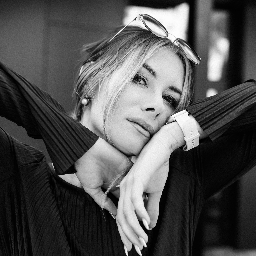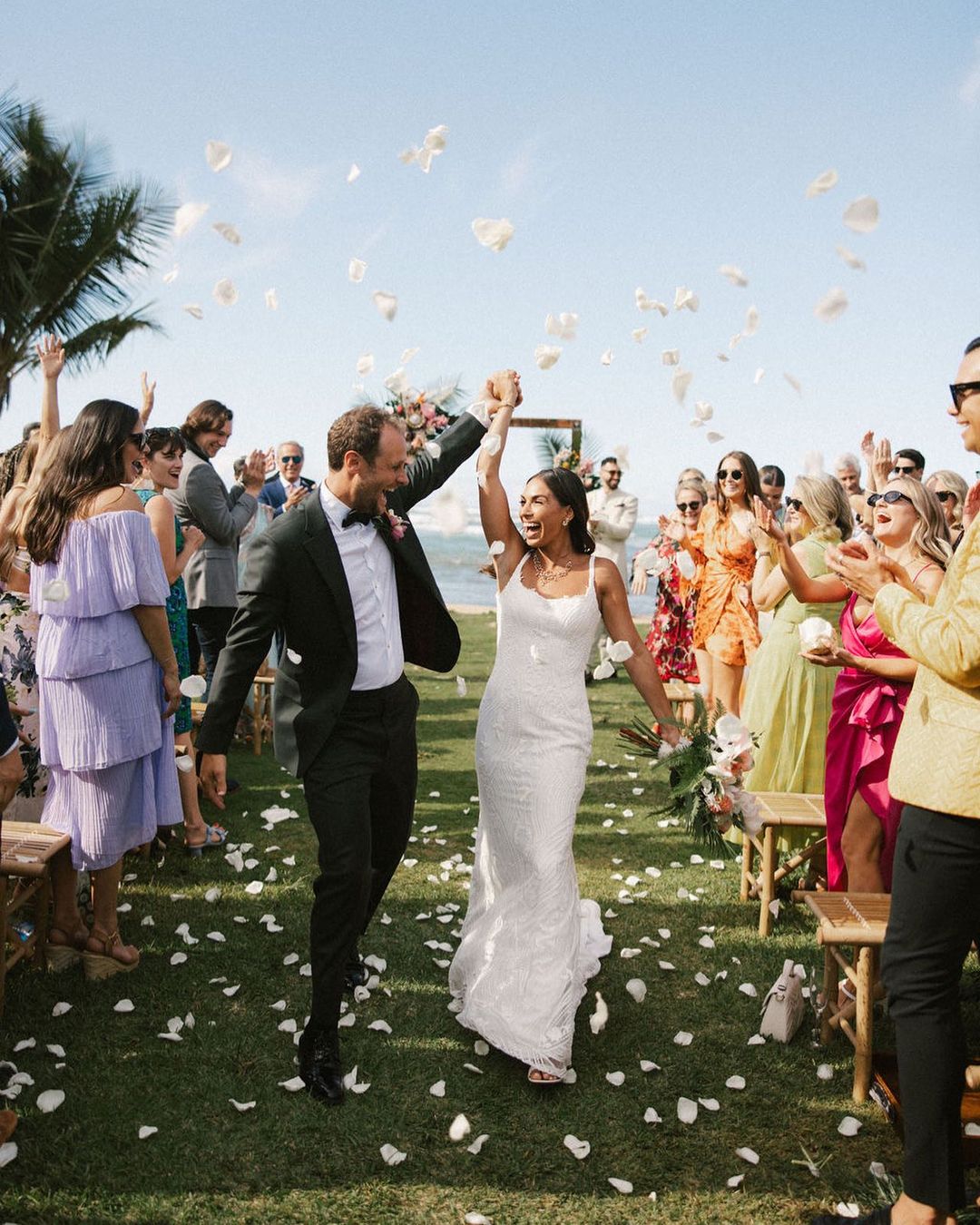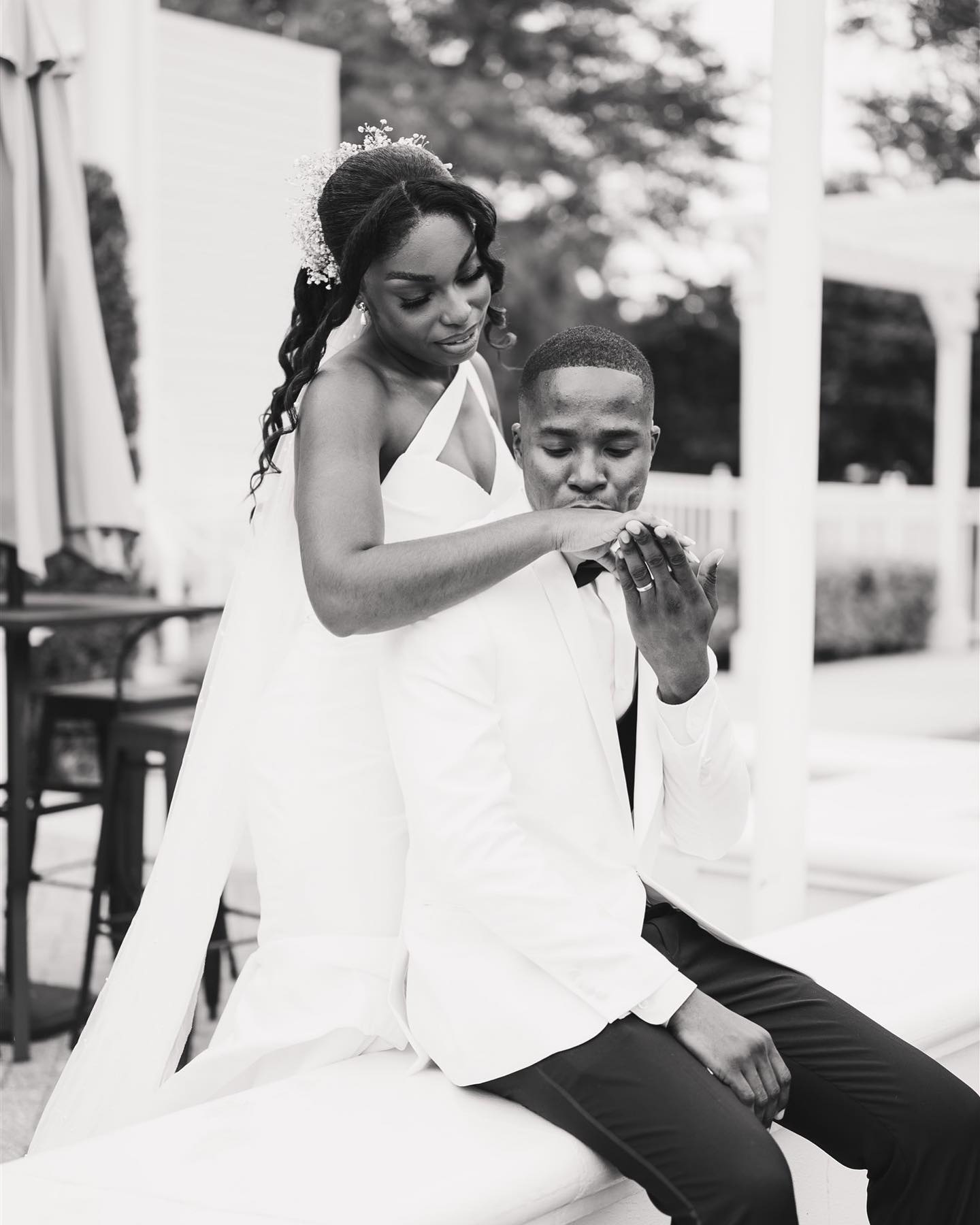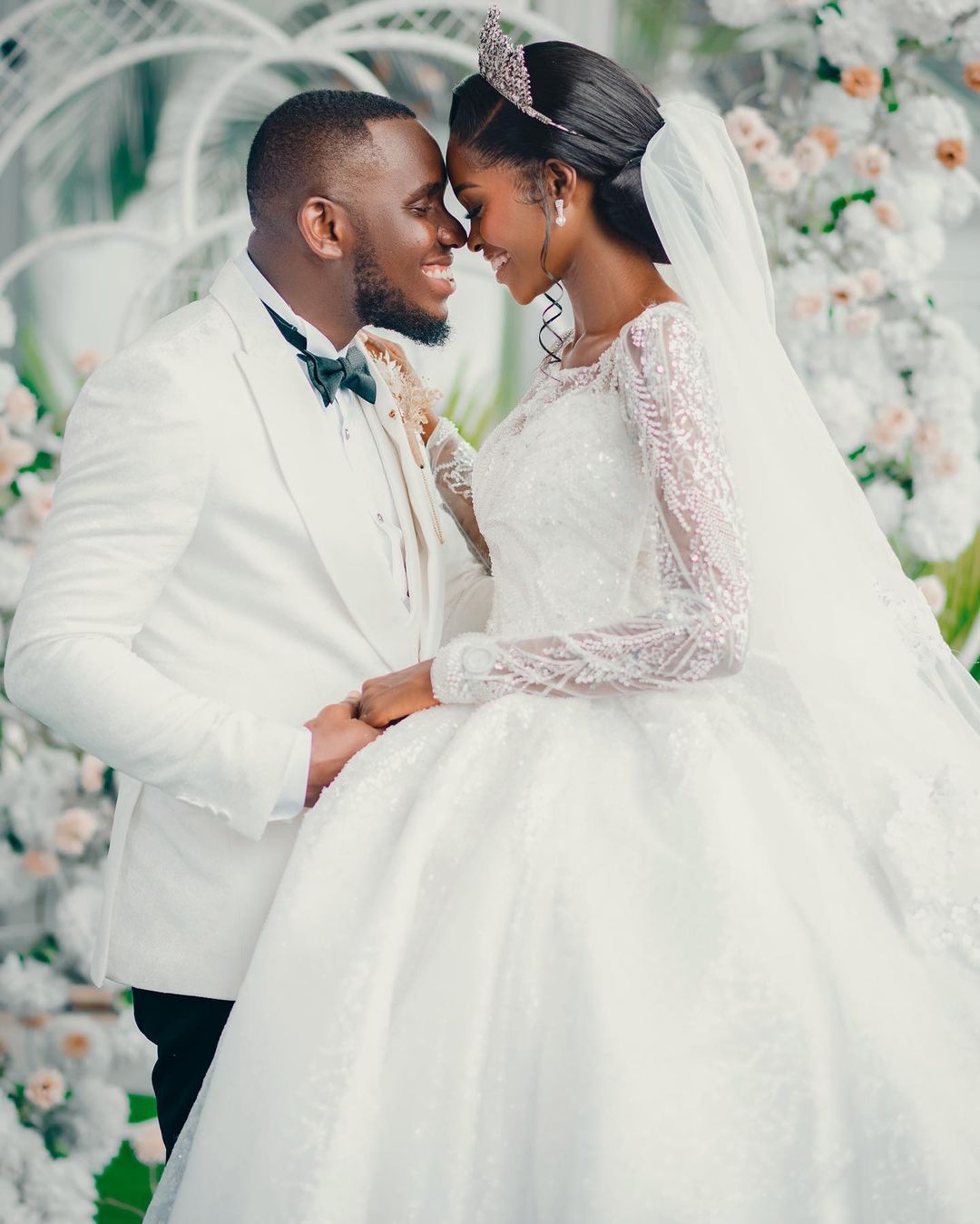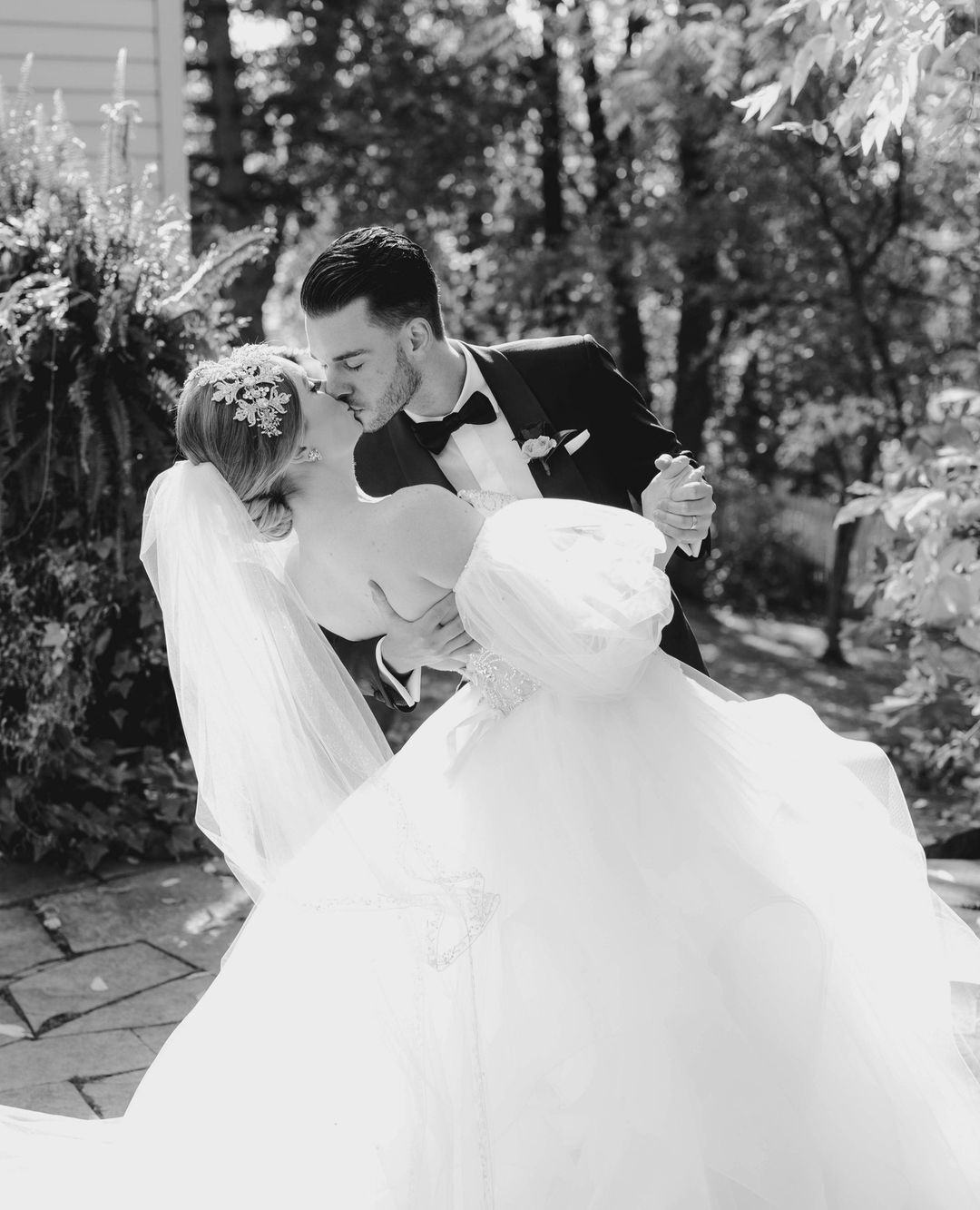Everything You Need to Know About the Baraat
- Author: Natali Grace Levine
- Reading time: 6 min 56 sec
- Publication date: 05/27/2023
- Updated: 01/24/2025
Today, we're diving into the vibrant world of the Indian wedding Baraat. From its roots and origin to the various ways of making an entrance, we're covering it all. Let's get this party started!

The Baraat Ceremony: Roots And Origin
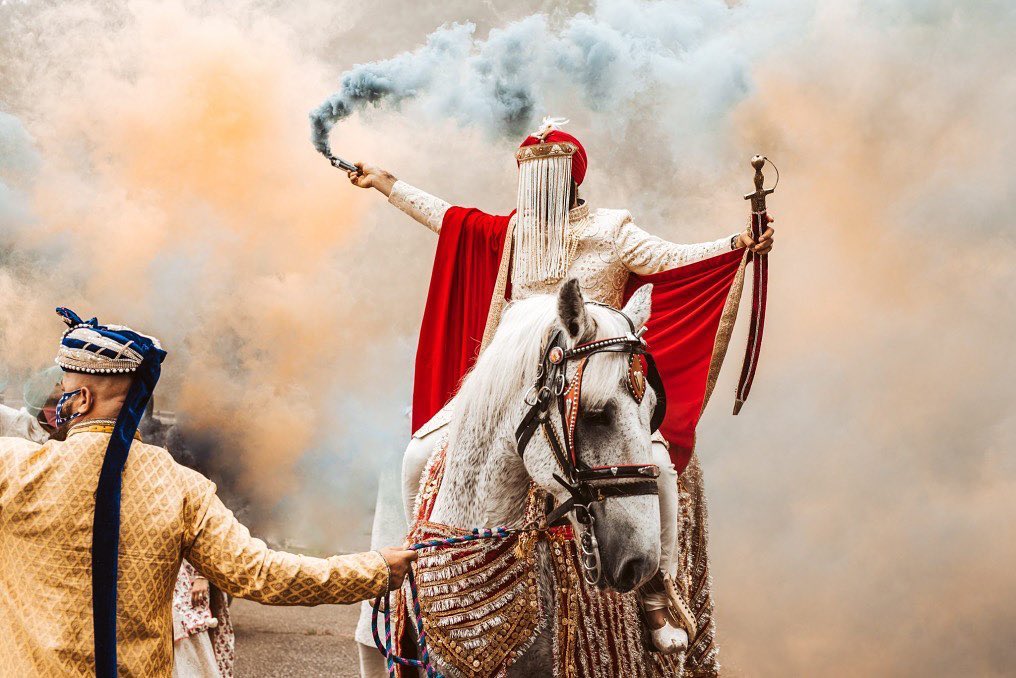
First things first, let's travel back in time to discover where this beautiful tradition comes from. The Baraat, also known as the groom's wedding procession, finds its roots in North Indian Hindu wedding customs. Although it's predominantly associated with Hindu weddings, the Baraat has also found its way into other Indian wedding traditions such as Sikh and Jain ceremonies.
The word 'Baraat' comes from the Sanskrit word 'Vara', which means 'groom', and the procession is led by the groom's closest male relatives and friends. The whole idea is to show off the groom's happiness and excitement about getting married. It's basically like saying, "Hey world, look how stoked I am to marry the love of my life!"
It's worth mentioning that the Baraat’s wedding meaning extends beyond just having a good time. It symbolizes the groom's journey to unite with his bride and the joining of two families. In some cultures, the bride's family waits at the entrance to welcome the groom with an 'Aarti' ceremony, symbolizing the removal of evil and inviting good fortune into the marriage.
Indian Baraat Ceremony Traditions
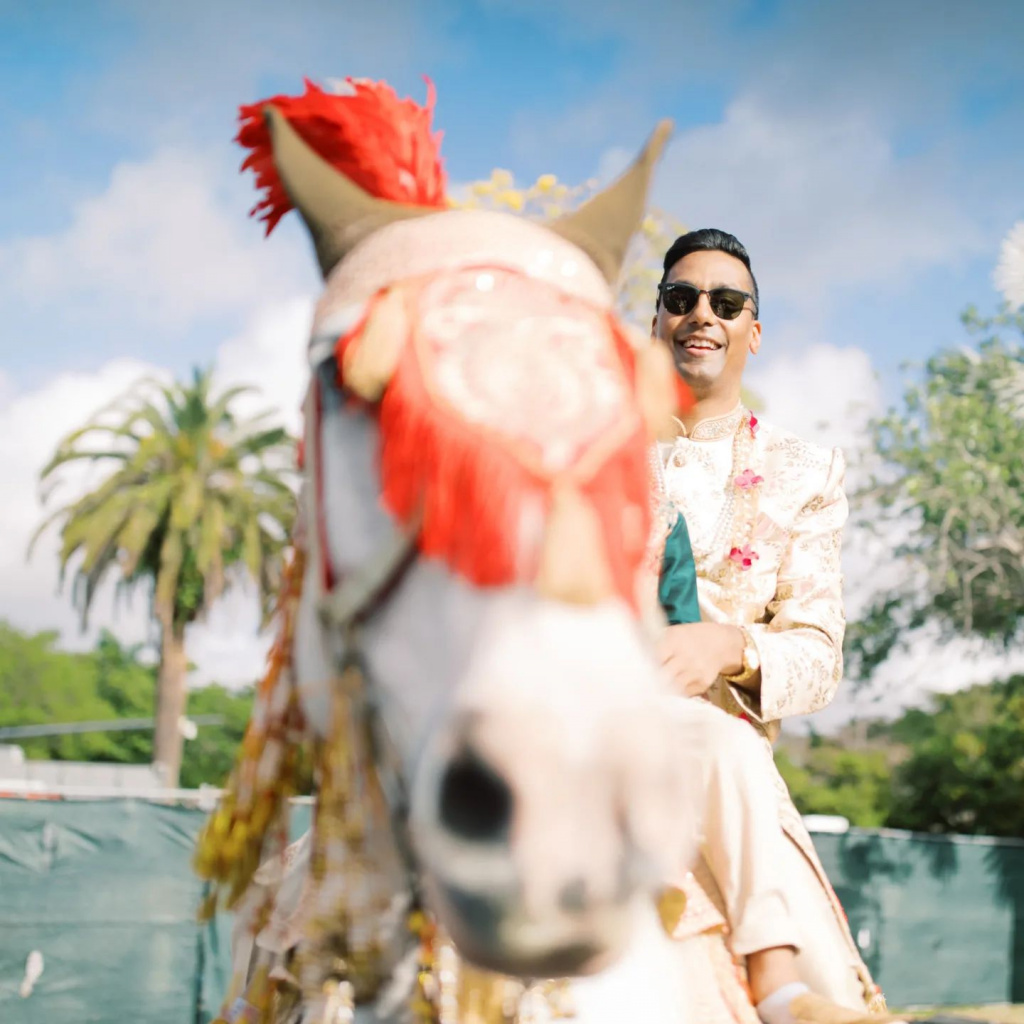
The Indian Baraat ceremony is a lively and spirited affair that celebrates the groom's journey to his bride's home or wedding venue. Each region and community may have its own unique customs and rituals, but there are several traditions commonly associated with the Baraat ceremony across different cultures in India:
- Sehra Bandi: Before the Baraat sets off, the groom's family and friends gather for a special ritual called Sehra Bandi. During this ceremony, the groom's face is covered with a decorative veil or sehra, which is attached to his turban. This veil symbolizes protection from the evil eye and represents the groom's humility.
- Ghodi Sajana: In many Indian Baraat ceremonies, the groom arrives on a beautifully decorated horse, known as Ghodi. The horse is adorned with colorful garments, garlands, and other embellishments, signifying prosperity and good fortune.
- Milni: As the Baraat procession reaches the bride's home or wedding venue, the bride's family welcomes the groom's family with open arms. The Milni ceremony involves the introduction and exchange of garlands between corresponding family members from both sides, symbolizing the union of the two families.
- Dancing and singing: The Baraat procession is an energetic and lively affair, characterized by music, singing, and dancing. The groom's friends and family members dance their way to the wedding venue, celebrating the joyous occasion and setting the stage for the rest of the festivities.
- Aarti and Tikka: Upon arrival at the wedding venue, the groom is welcomed by the bride's mother, who performs the Aarti ceremony. She circles a lit lamp around the groom's face to ward off evil spirits and then places a red Tikka or vermilion mark on his forehead to bless him.
- Jaimala/Varmala: After the groom has been welcomed, the bride and groom exchange flower garlands, known as Jaimala or Varmala. This exchange symbolizes their mutual acceptance and commitment to one another.
- Entry to the Mandap: Following the exchange of garlands, the groom is escorted to the Mandap, a decorated canopy where the main wedding ceremony takes place. The Baraat procession concludes, and the wedding rituals begin.
What Is The Baraat Day
Baraat day is the day when the groom and his family arrive at the wedding venue, and it's often considered one of the most exciting parts of an Indian wedding. From the moment the groom sets off in his chosen mode of transportation, it's a non-stop party filled with music, dancing, and tons of happiness.
The Baraat procession can last anywhere from a few minutes to a few hours, depending on the distance between the groom's and bride's homes or wedding venues. Throughout the procession, the groom's family members and friends shower him with love, blessings, and good wishes for his future with his bride.
Upon arrival at the wedding venue, the bride's family greets the groom with a warm welcome, often showering him with flower petals and performing traditional rituals. The Baraat sets the stage for the rest of the wedding festivities, creating a joyous atmosphere filled with love, laughter, and excitement.

The Different Ways Of Baraat Entrance
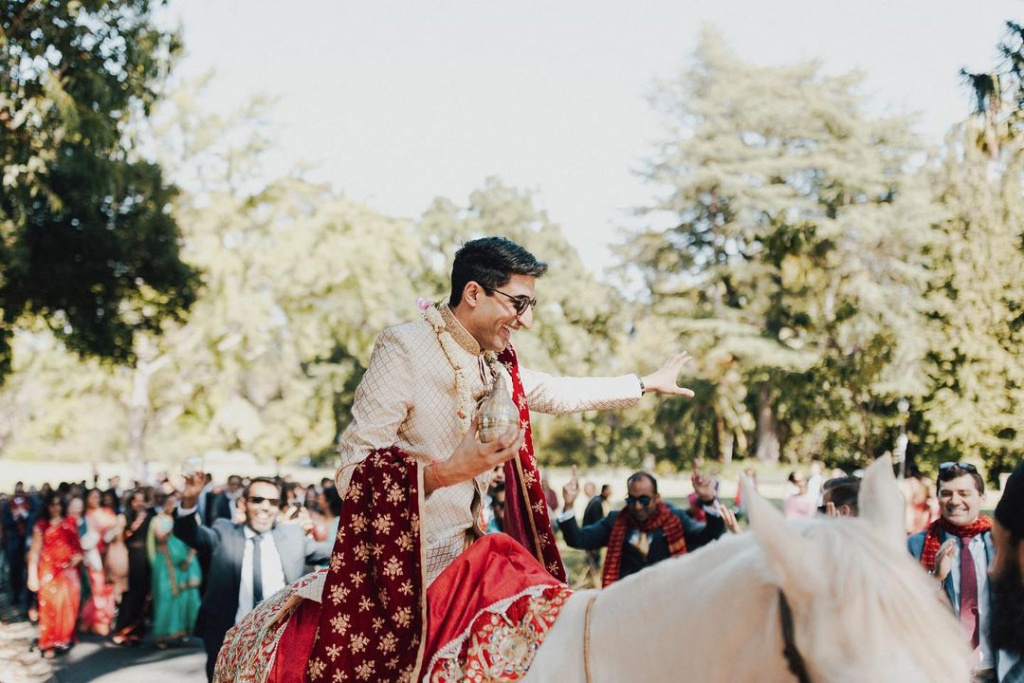
Nowadays, the Baraat entrance has evolved into a creative and fun expression of the groom's personality. There are many ways to make a grand entrance, and let us tell you, some of these grooms really know how to steal the show. Here are a few popular ways to arrive at the wedding venue:
- On horseback: You can't go wrong with the classic horse, bringing that royal and elegant vibe. Often, the horse is adorned with colorful decorations and garlands, making the groom feel like a true prince.
- In a vintage car: For those grooms who like a touch of vintage charm, arriving in a classy, old-school car is the way to go. The car can be decked out with flowers, ribbons, or other decorations to match the wedding theme.
- On a motorcycle or scooter: For adventure-loving grooms, a bike or scooter entrance is sure to make heads turn. Decked out with garlands, balloons, or even personalized license plates, it's an entrance that screams fun and excitement.
- In a decked-out auto-rickshaw: Why not go all out and arrive in a decorated auto-rickshaw? It's unique, quirky, and oh-so-fun! Add colorful drapes, balloons, and even a sound system to make it the ultimate party on wheels.
- Elephant ride: Embrace the regal and majestic by arriving on the back of a beautifully decorated elephant. This larger-than-life entrance is sure to make a lasting impression on your guests.
- Boat or canoe: If the wedding venue is near a body of water, why not make a grand entrance by arriving in a boat or canoe? Deck it out with flowers and colorful drapes to add that extra touch of romance.
- Helicopter: If you want to go all out and make a truly unforgettable entrance, consider arriving by helicopter. Your guests will be talking about it for years to come!
- Vintage bicycle: For the eco-friendly and quirky groom, arriving on a vintage bicycle adorned with flowers and ribbons can be a charming and unique way to make an entrance.
- Hot air balloon: If you're looking to make a whimsical and dreamy entrance, consider arriving in a hot air balloon. This magical mode of transportation is sure to leave your guests in awe.
- Parade float: Create a custom parade float that represents your personality, interests, or even your love story. This unique and attention-grabbing entrance is guaranteed to be a showstopper.
- Tractor or farm vehicle: For those with a rural or countryside wedding theme, arriving on a decorated tractor or another farm vehicle can be a fun and memorable way to make an entrance.
- Golf cart: A decked-out golf cart can be an amusing and unconventional mode of transportation, especially if the wedding venue is located within a golf course or large outdoor area.
Indian Wedding Baraat Ideas
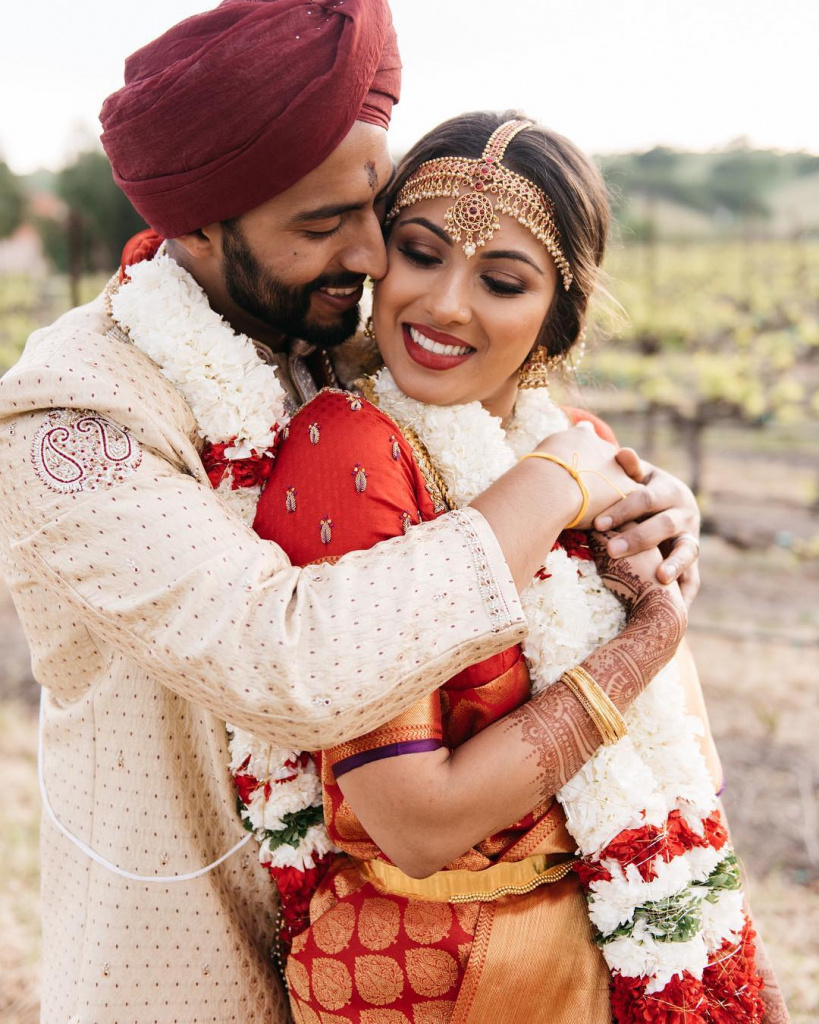
The Baraat is all about fun, so don't be afraid to think out of the box and add your own personal flair. Here are some ideas to make the Baraat even more memorable:
- Choreographed dance: Get your squad together and choreograph a dance routine to make an unforgettable entrance. You can even include a surprise dance-off between the groom and his friends.
- Flash mob: Surprise the guests with a spontaneous flash mob that'll leave everyone in awe. Coordinate with friends and family members beforehand to make it a moment to remember.
- DIY Baraat props: Hand out custom-made signs, banners, or flags to make the procession even more lively and colorful. Personalize them with the couple's names, wedding hashtags, or even inside jokes to make the Baraat truly unique.
- Special performances: Invite talented friends or family members to perform during the procession. This could be anything from live music or singing to a traditional dance performance, adding a personal touch to the festivities.
- Fireworks or sparklers: Light up the night with a dazzling display of fireworks or hand out sparklers to guests as the Baraat approaches the wedding venue. It's a surefire way to make a memorable and magical entrance.
Is There A Particular Baraat Music
There's no specific Baraat music, but traditional Indian wedding songs like "Mehndi Laga Ke Rakhna" and "Aaj Mere Yaar Ki Shaadi Hai" are popular choices. You can also mix it up with some Bollywood chartbusters and your favorite international tunes. The key is to keep the music lively and energetic, so everyone can join in on the dancing and celebrations.
Typically, the music is played by a brass band or DJ, creating a live and interactive atmosphere. Dhol players are also often included in the Baraat procession, providing a rhythmic beat that encourages everyone to dance and celebrate.

Who Can Join The Baraat
Traditionally, the Baraat consists of the groom's family, friends, and close relatives. However, anyone who wants to share in the happiness and excitement of the occasion is welcome to participate. It's common for the Baraat to include a mix of the following people:
- The groom's parents and siblings: As the immediate family members, they play a significant role in the Baraat procession and are often at the forefront, leading the way.
- Close relatives: Aunts, uncles, cousins, and other close relatives of the groom are usually part of the Baraat, showing their support and sharing in the joy of the occasion.
- Friends: The groom's friends are often an integral part of the Baraat, bringing energy and enthusiasm to the celebrations. They may also participate in choreographed dances or other special performances during the procession.
- Neighbors and acquaintances: In some communities, neighbors and acquaintances are also invited to join the Baraat, making it a more inclusive and community-oriented event.
- Musicians and performers: A Baraat procession typically features live music, often provided by a brass band, DJ, or Dhol players. Performers, such as dancers or entertainers, may also join the Baraat to create a lively and festive atmosphere.
While the Baraat primarily consists of the groom's side of the family, in some modern weddings, members from the bride's side may also join the procession. This reflects the growing trend towards inclusivity and the blending of both families in contemporary Indian weddings.









